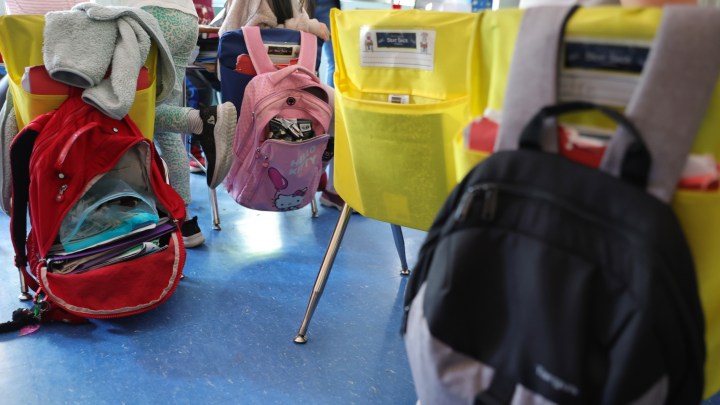
Can pandemic relief money help schools bring kids up to speed academically?
Can pandemic relief money help schools bring kids up to speed academically?

Since the beginning of the pandemic, fourth and eighth graders around the country have fallen way behind in math and reading, according to an assessment from the federal government out this week. There is, however, some good news: Public schools still have much of the $190 billion left that they received in pandemic relief money from the federal government to help students.
The challenge: Districts have lots of competing choices for what they could spend that money on — and extra lessons in fractions or reading aren’t necessarily it.
When kids returned to school full time last year at the Umatilla School District in eastern Oregon, they’d kinda forgotten how to be in school.
“We saw students who were really having a hard time interacting with one another,” said Heidi Sipe, the superintendent there.
So Sipe spent some of the $5 million her district received from the federal government on summer camps, where kids could relearn how to socialize while kayaking and cooking with solar ovens.
She also hired extra instructional coaches and substitutes. But once the federal money’s gone, she doesn’t know how she’ll pay them.
“No, I do not know,” Sipe said, laughing. “I would love to tell you, ‘Yes, this is my exact plan.'”
There’s a deadline: Districts have until September 2024 to spend the last of their COVID-19 relief funds. And when the latest round came through last year, the government said only 20% of that had to be spent on learning recovery.
“That 20%? That was a guess,” said Marguerite Roza, who directs the Edunomics Lab at Georgetown University, which estimates about two-thirds of the federal money remains to be spent. Districts are only just realizing how far behind students are, she said. “The question now is, should we pivot and direct more of that money to remedying these deep learning gaps?”
Unfortunately, there are some problems you can’t just throw money at.
“If I wanted to say, ‘I’m gonna hire 100 more teachers,’ OK, I could use the money that way. But there’s nowhere to put them,” said Nick Polyak, who leads the Leyden Community High School District #212 in suburban Chicago. “There aren’t enough of those teachers to hire.”
Logistics make it hard to spend on instruction, he added. “I couldn’t possibly spend that amount of money on those kinds of supports.”
Instead, Polyak is planning to put the money toward updating the HVAC systems in schools that were built more than six decades ago.
There’s a lot happening in the world. Through it all, Marketplace is here for you.
You rely on Marketplace to break down the world’s events and tell you how it affects you in a fact-based, approachable way. We rely on your financial support to keep making that possible.
Your donation today powers the independent journalism that you rely on. For just $5/month, you can help sustain Marketplace so we can keep reporting on the things that matter to you.












